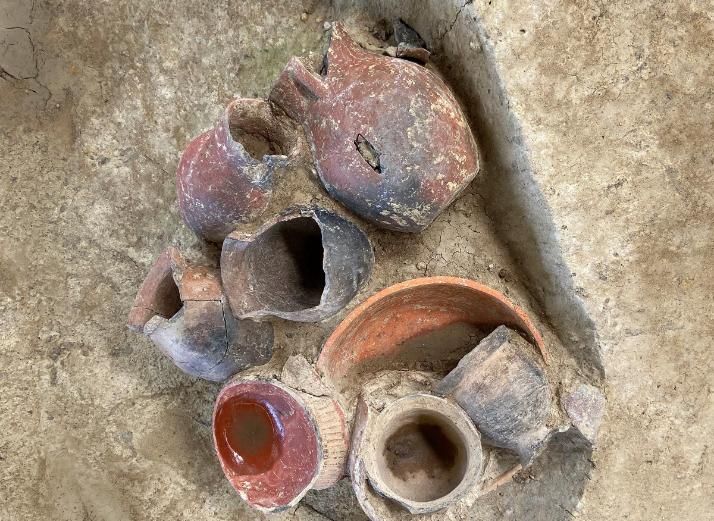NEWS
STUDY SHOWED THAT BEER DRINKING DATES BACK 9000 YEARS IN CHINA
By Tony Zhu
20-9-2021

Credit: Wang Jiajing
A new study has found evidence of ritual beer drinking in China dating back 9,000 years ago at a burial site in the town of Qiaotou in the eastern province of Zhejiang.
In a study published in the August edition of PLoS One, a peer-reviewed open access scientific journal, archaeologists reported discovering a deposit of pots placed on a platform mound, which was likely used for rituals in honouring the dead.
The study said these pots are probably some of “the earliest known painted pottery in the world.” No pottery of this kind has been found at any other sites dating to this period.
The research team found that 7 of the 20 vessels appeared to be long-necked Hu pots, which were used to drink alcohol in the later historical periods.
They successfully identified microbotanical (starch granules and phytoliths) and microbial (mold and yeast) residues in the pots. These were consistent with residues from beer fermentation and are not found naturally in soil or in other artefacts unless they had contained alcohol.
“Through a residue analysis of pots from Qiaotou, our results revealed that the pottery vessels were used to hold beer, in its most general sense— a fermented beverage made of rice (Oryza sp.), a grain called Job’s tears (Coix lacryma-jobi), and unidentified tubers,” said co-author Wang Jiajing, an assistant professor of anthropology at Dartmouth.
“This ancient beer though would not have been like the IPA that we have today. Instead, it was likely a slightly fermented and sweet beverage, which was probably cloudy in colour.”
The results also showed that phytoliths of rice husks and other plants were also present in the residue from the pots. They may have been added to the beer as a fermentation agent.
At that time, most communities were hunter-gatherers who relied primarily on foraging. As the researchers explain in the study, given that rice harvesting and processing was labour intensive, the beer at Qiaotou was probably a ritually significant drink/beverage.
The residue analysis of the pots also showed traces of mold, which was used in the beermaking process.
“We don’t know how people made the mold 9,000 years ago, as fermentation can happen naturally,” said Wang. “If people had some leftover rice and the grains became moldy, they may have noticed that the grains became sweeter and alcoholic with age.”
Given that the pottery at Qiaotou was found near the burials in a non-residential area, the researchers conclude that the pots of beer were likely used in ritualistic ceremonies relating to the burial of the dead.
(the writer can be contacted at: info@thewinechronicle.com)
ALL RIGHTS RESERVED
**IF YOU THINK THE WINE CHRONICLE IS WORTH SUPPORTING, PLEASE MAKE A DONATION TO HELP US IMPROVE AND CONTINUE OUR WORK**
TRENDING│ FOCUS│ MISSION│ ABOUT US│ CONTACT
| 
